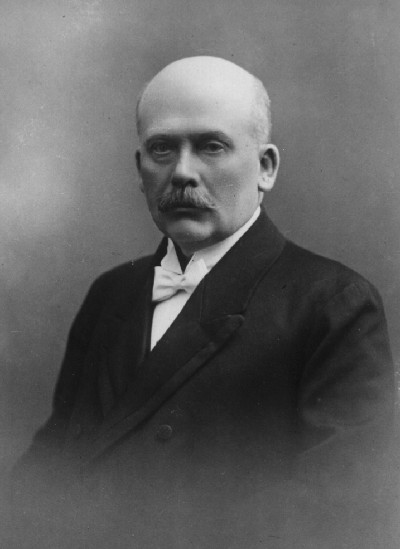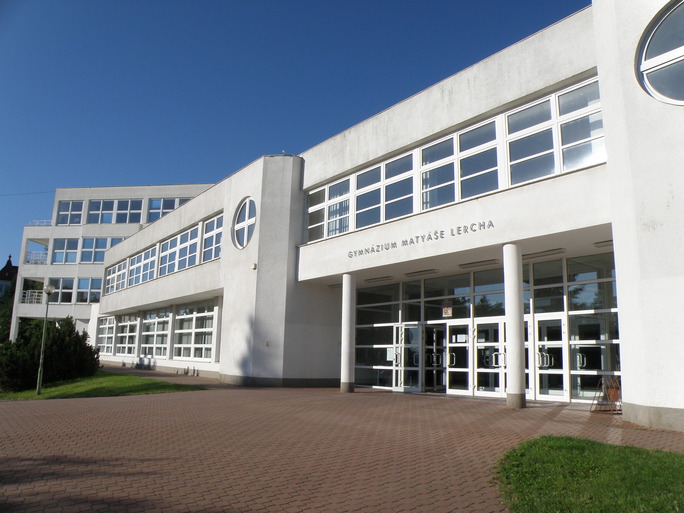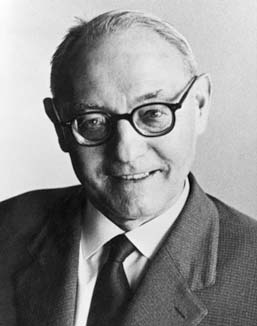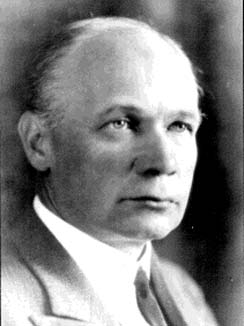

I've been asked to talk about Prof Matyaš Lerch's work in Complex Analysis, but I would like start a bit more generally.
Who was Matyaš Lerch? What did he do?
You shouldn't expect a full answer to those question from this lecture, for two reasons.
First, I'm not a historian of Mathematics. I'm a working mathematician with a side interest in the history of my subject. Matyaš Lerch certainly deserves the attention of a proper historian of Mathematics, but so far none have taken up the topic, so I'm afraid you are stuck with an amateur. I'll try my best, but I will certainly miss some of the historical context.
The second reason you shouldn't expect this lecture to give a full answer to these questions is that an hour lecture, or even a day long series of such lectures, is too short a time for a full answer. Prof Josef Škrášek compiled a list of 238 publications of Prof Lerch in 1953. While many of Prof Lerch's articles resist a simple subject classification, most of these publications have some connection to Complex Analysis, which is the particular area of Prof Lerch's work which I have been asked to address, and I would argue that about half have Complex Analysis as their subject.
Let's start, then, with a more manageable question:
What is Prof Lerch known for?
Well, here in Brno, he is probably best known as the person after whom this is named:

This is the Gymnazium Matyaše Lercha. It is simultaneously the Lycée Matyaš Lerch. I think Matyaš Lerch would have been quite happy to know that a bilingual gymnzium would be named in his honour. I've no idea how many languages Prof Lerch spoke, but he published Mathematics in at least six. He lived and worked for many years here:

This is Fribourg or Freiburg in Switzerland. It has two names because it is on the linguistic boundary between French and German, which are, along with Czech, the languages in which most of Prof Lerch's articles were written. Perhaps more importantly, the Lycée Matyaš Lerch was inspired by an idea with which Prof Lerch would have agreed wholehartedly, even if the slogan "Zpatky do Evropy" was not yet popular. Prof Lerch's career shows that Czech Mathematics can and should keep pace with European mathematical developmentsrather than isolating itself from them. This view was unpopular with many Czech mathematicians of the time, who prefered, as we say in English, to be big fish in a small pond rather than small fish in a big pond. It was largely as a result of this conflict, together with Prof Lerch's disinclination to hide what he thought of many of his contemporaries. that Prof Lerch found it easier to gain a professorial position in Switzerland than at home.
So Matyaš Lerch is the man after whom Gymnazium Matyaše Lercha was named, but what did he in fact do?
There is a Lerch's Theorem. In fact there are at least two theorems sometimes known by that name. What is most commonly called Lerch's Theorem is the following:
If \(\mathop{\mathrm{Re}}(u-v)>1\) then \(\sum_{n=0}^\infty\binom{u}{n}/\binom{v}{n}=\frac{v+1}{v-u+1}\).
The binomial coefficients above require some explanation if \(u\) and \(v\) are not integers. We can express them simply as products:
\[\binom{u}{n}=\prod_{j=1}^n\frac{u-j+1}{j}\].
Or, in terms of Gamma functions:
\[\binom{u}{n}=\frac{\Gamma(u+1)}{\Gamma(n+1)\Gamma(u-n+1)}\].
The Gamma function was a subject of particular interest to Prof Lerch, and many of his papers are devoted to its properties. The theorem itself is best thought of as giving the value of a hypergeometric function at one of its singular points:
\(F(\alpha,\beta;\gamma;x)=\frac{\gamma-1}{\gamma-\alpha-1}\) when \(\beta=x=1\) and \(\mathop{\mathrm{Re}}(\gamma-\alpha)>1\).
So we should think of Lerch's Theorem as telling us a special value of a special function. In this sense it is typical of much of his work. It is, however, somewhat disappointing that it is this rather unexciting result which is know as Lerch's Theorem.
Rather more interestingly, Prof Lerch's name is also associated with this function:
\[\mathfrak K (w, x, s) = \sum _ { n = 0 } ^ \infty \,\, ( w + n ) ^ { - s } \exp ( 2 n \pi i x ).\]
This is known as the Lerch-Hurwitz zeta funtion, or sometimes just a the Lerch zeta function. The latter name is more accurate, though Prof Lerch used a fraktur K, as I've just done, rather than a zeta to denote it. It is generalisation by Lerch of a generalisation by Hurwitz of the Riemann zeta function:
\[\zeta(s) = \sum _ { n = 1 } ^ \infty n ^ { - s }\]
The Riemann zeta function, which is due not to Riemann but to Euler, is the special case of the Lerch zeta function when \(w = 1\) and \(x = 0\). It is of central importance in the analytic theory of numbers, which was a subject of great interest to Prof Lerch. The Lerch zeta function satisfies a functional equation, also due to Prof Lerch, which generalises Riemann's functional equation for his, really Euler's, zeta function:
\[\begin{array}{r@{\:}c@{\:}l} \mathfrak K (w, x, 1 - s ) & = & ( 2 \pi ) ^ { - s } \Gamma ( s ) \left [ e ^ { \pi i [ s / 2 - 2 w x ] } \mathfrak K (x, - w, s ) \right . \\ & & \qquad \left . + e ^ { - \pi i [ s / 2 - 2 w ( 1 - x ) ] } \mathfrak K (1 - x, w, s ) \right ] \end{array}\]
Now, I have just lied to you slightly, in writing down the definition of the Lerch zeta function and it's functional equation. For the functional equation to be meaningful we must extend the definition beyond the values for which the series which I wrote down earlier converges. This is done by analytic continuation, a process first made precise by one of Prof Lerch's teachers in Berlin, Prof Weierstrass. Analytic continuation is now standard undergraduate material, but it was not so well understood a century ago. For example, Prof Paul Du Bois-Reymond claimed to have found a function which could not be analytically continued at all:
\[\sum _ { m = 0 } ^ \infty \exp ( - 2 \sqrt { a ( m + 1 ) } ) z ^ m\]
Prof Lerch showed that this claim was mistaken. Rather remarkably, he did so not by the sort of indirect argument one might expect, but rather by finding its analytic continuation explicitly:
\[\sum _ { m = 0 } ^ \infty \exp ( - 2 \sqrt { a ( m + 1 ) } ) z ^ m = \sqrt { a / \pi } \int _ 0 ^ \infty \frac { \exp ( - a / x ) } { \exp ( x ) - z } \frac { d x } { x ^ { 3 / 2 } } .\]
There are, however, many other functions which do have the property that that they can not be analytically continued at all. Although the number of such functions is uncountably infinite, almost any mathematician you ask will give you the same example:
\[\sum _ { n = 0 } ^ \infty z ^ { n ! }\]
This example is, to use a phrase of Paul Halmös, psychologically unique. It is also, although almost no textbooks give credit, originally due to Prof Lerch. One final note. Questions of the natural domain of definition of analytic functions are even more interesting in several complex variables. The earliest non-trivial example I know of in this area is this:
\[ \sum _ { \mu = 0 } ^ \infty \sum _ { \nu = 0 } ^ \infty \binom{m}{\mu}\binom{n}{\nu} a^{\mu\nu} u^\mu x^\nu \]
If \(a\) is of absolute value 1, but not a root of unity, then this series converges for \(( u , x )\) in the unit polydisc and cannot be extended analytically to any larger domain. This example is also due to Prof Lerch.
I mentioned previously that there are two theorems which are sometimes given the name of Lerch's Theorem. One of these is the one I showed you earlier. The second is far more important. In Engineering it is one of the most frequently used mathematical theorems, although most people who use it probably aren't aware that they are doing so, and fewer still would know that it is due to Prof Lerch. For almost all of them, the following weak form of the theorem suffices:
Suppose that \(f\) and \(g\) are continuous functions and that \[ F ( s ) = \int _ 0 ^ \infty f ( t ) \exp ( - s t ) \, d t \] and \[ G ( s ) = \int _ 0 ^ \infty g ( t ) \exp ( - s t ) \, d t \] converge for some \(s\) and that \(F ( s ) = G ( s )\) for all \(s\) for which both integrals converge. Then \(f ( t ) = g ( t )\) for all \(0 < t < \infty\).
This theorem answers the question of uniqueness of the Laplace transform. Prof Lerch doesn't call it the Laplace transform. That name didn't become widespread until later. For Prof Lerch these are Abel generating functions.
In any case, when solving ordinary differential equations by what we now call the Laplace transform method, the main part of the calculation is always to find the Laplace transform of the function sought. One then uses this, and a table of Laplace transforms to identify the original function. This final step involves a crucial, but rarely stated, appeal to the theorem above. That theorem is, however, only a corollary of the following much stronger theorem:
Suppose that \(f\) and \(g\) are continuous functions and that \(F\) and \(G\) are as before. If the integrals converge for some complex \(s _ 0\) and there is and a positive real \(\sigma\) such that \(F ( s ) = G ( s )\) for all \(s\) of the form \(s = s _ 0 + n \sigma, n = 0, 1, 2, \ldots.\) Then \(f ( t ) = g ( t )\) for all \(0 < t < \infty\).
As Prof Lerch pointed out, this theorem gives not only an affirmative answer to the question of uniqueness of the Laplace transform, but also a negative answer in general to the question of existence for the inverse transform. It shows, for example, that the sine and cosine functions are not Laplace transforms.
One final historical note is that Lerch's theorem was the first serious application of the Weierstrass Approximation Theorem. In fact, once you know this the rest of the proof is easy to reconstruct. Prof Lerch gave a particularly ingenious new proof of the Weierstrass Approximation Theorem in the French version of his article with the theorem above. This proof is a nice example of Lerch's style, so I will give a sketch of the argument.
We want to approximate a continuous function in an interval, which we can without loss of generality take to be the interval \(0, 1\), by a polynomial. It's easy to see that we can approximate any continuous function arbitrarily well by a piecewise linear function--it's essentially a matter of connecting the dots--so need only consider the question of approximating a piecewise linear function by polynomials. To be more precise, suppose the interval \(0, 1\) is split into subintervals \( x _ 0 , x _ 1 , \ldots x _ { n - 1 } , x _ n \) on which our function is linear and that \(f ( x _ j ) = y _ j\). Lerch shows that this function has the following uniformly convergent series expansion:
\[ \begin{array}{l} ( x _ 0 - x + 1 / 2 ) y _ 0 + ( x - x _ n + 1 / 2 ) y _ n \\ \quad \displaystyle + \frac 1 2 \sum _ { j = 0 } ^ { n - 1 } ( y _ j + y _ { j + 1 } ) ( x _ { y + 1 } - x _ j ) \\ \quad \displaystyle + \frac 1 2 \sum _ { n = 1 } ^ \infty \frac 1 { n ^ 2 \pi ^ 2 } \sum _ { j = 0 } ^ { n - 1 } \frac { y _ { j + 1 } - y _ { j } } { x _ { j + 1 } - x _ { j } } \left [ \cos ( 2 n \pi [ x - x _ { j + 1 } ] ) - \cos ( 2 n \pi [ x - x _ { j + 1 } ] ) \right ] \end{array}\]
Truncating the infinite series gives an approximation to arbitrary accuracy by the sum of an ordinary and a trigonometric polynomial. Since the trigonometric functions' Taylor expansions converge uniformly on our compact interval, the theorem follows.
In addition to his own work, Prof Lerch also had a more indirect, but perhaps even more important, legacy as a teacher. The Mathematics Geneology Project records a total of 1266 descendents, even though it counts descent only through doctoral supervision. I will only mention four of these. For the history of Mathematics in Brno, probably the most important was Prof Otakar Borůvka.

Better known internationally was Prof Michel Plancherel, famous for the Plancherel Theorem in Harmonic Analysis.

Turning to more modern times, probably the most prominent of Prof Lerch's mathematical descendents still alive and working is Prof Gilbert Strang.

Prof Strang is one of leading figures in modern Applied Mathematics. His descent from Prof Lerch is through Prof Plancherel and Prof Peter Henrici, who was Prof Strang's supervisor at UCLA.

It is the late Prof Henrici who, more than anyone else, continued the Complex Analytic tradition of Prof Lerch in the mid to late twentieth century. Prof Henrici's great three volume text on Applied and Computational Complex Analysis is full of material which would, I think, have greatly appealed to Prof Lerch.
In this brief lecture I have only had time to cover the best known and most important of Prof Lerch's results in Complex Analysis. I've only alluded to his important work on the Gamma function, and said nothing at all about his work on theta functions and on the Dedekind eta function. That work, while belonging to Complex Analysis, was motivated by problems in Number Theory and, in particular, by the problem of computing class numbers of quadratic forms, the work for which Prof Lerch won the prestigous Grand Prix de l'Académie des sciences in 1900.
It's likely also that there are further results of which we are not even aware. Some of these were probably in his correspondence, much of which unfortunately did not survive the war. Also, at the beginning of this lecture I mentioned Prof Škrášek's 1953 list of 238 publications of Prof Lerch. What I didn't mention is that that list has gaps. Prof Škrášek, for example, lists one article in Crelles Journal on the incomplete Gamma function, but in fact Prof Lerch had two articles on this topic there. The first of the two is missing from Prof Škrášek's list, and also missing from Zentralblatt.
So we don't really know the full extent of Prof Lerch's work, though we certainly know that it was extensive. I hope that by the time the next important Lerch anniversity is commemorated the subject will have attracted the attention of a proper historian of Mathematics. In the interim, I hope I've told at least some of you some things you didn't already know about the man I consider one of the most important Czech mathematicians, indeed perhaps the most important Czech mathematician.